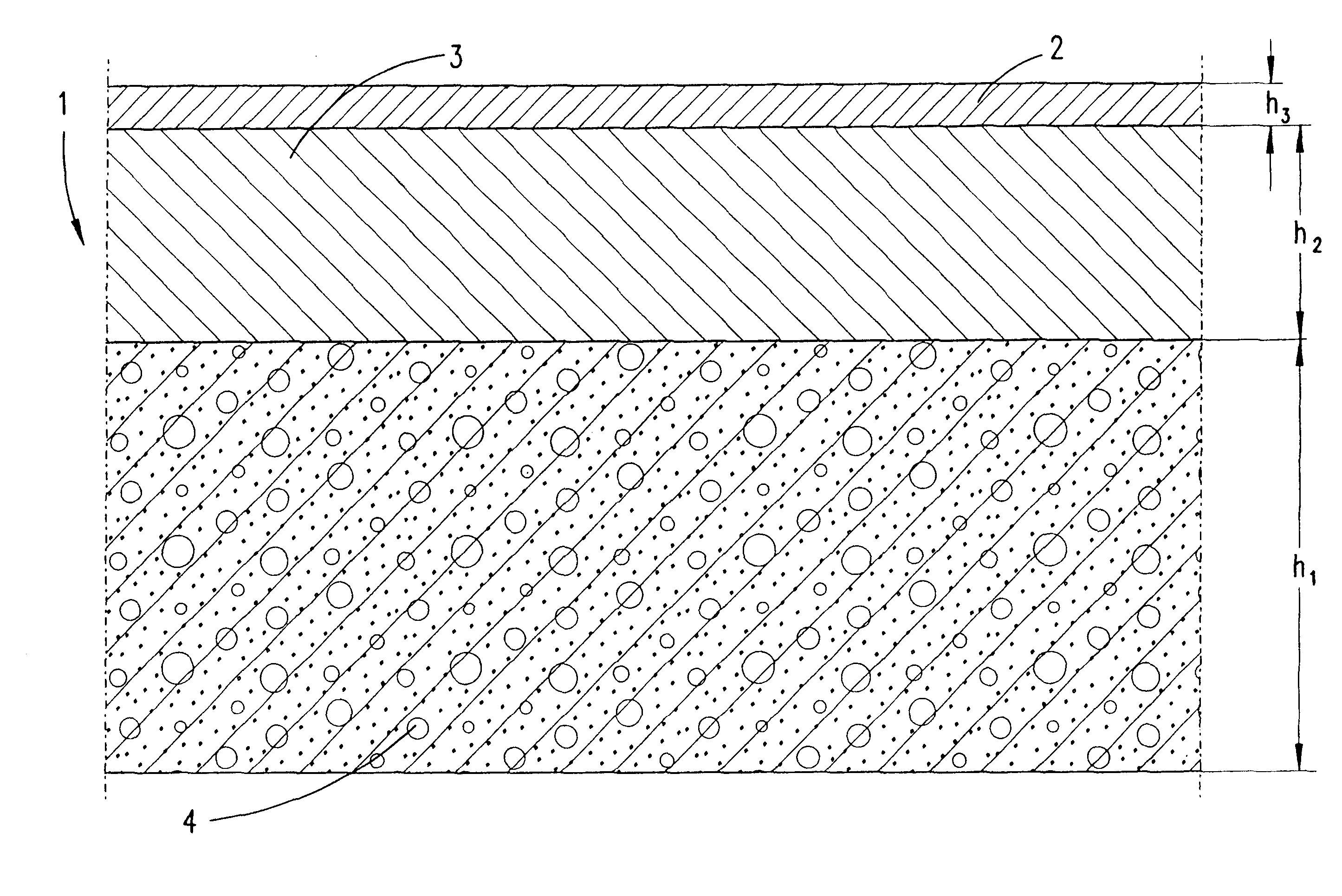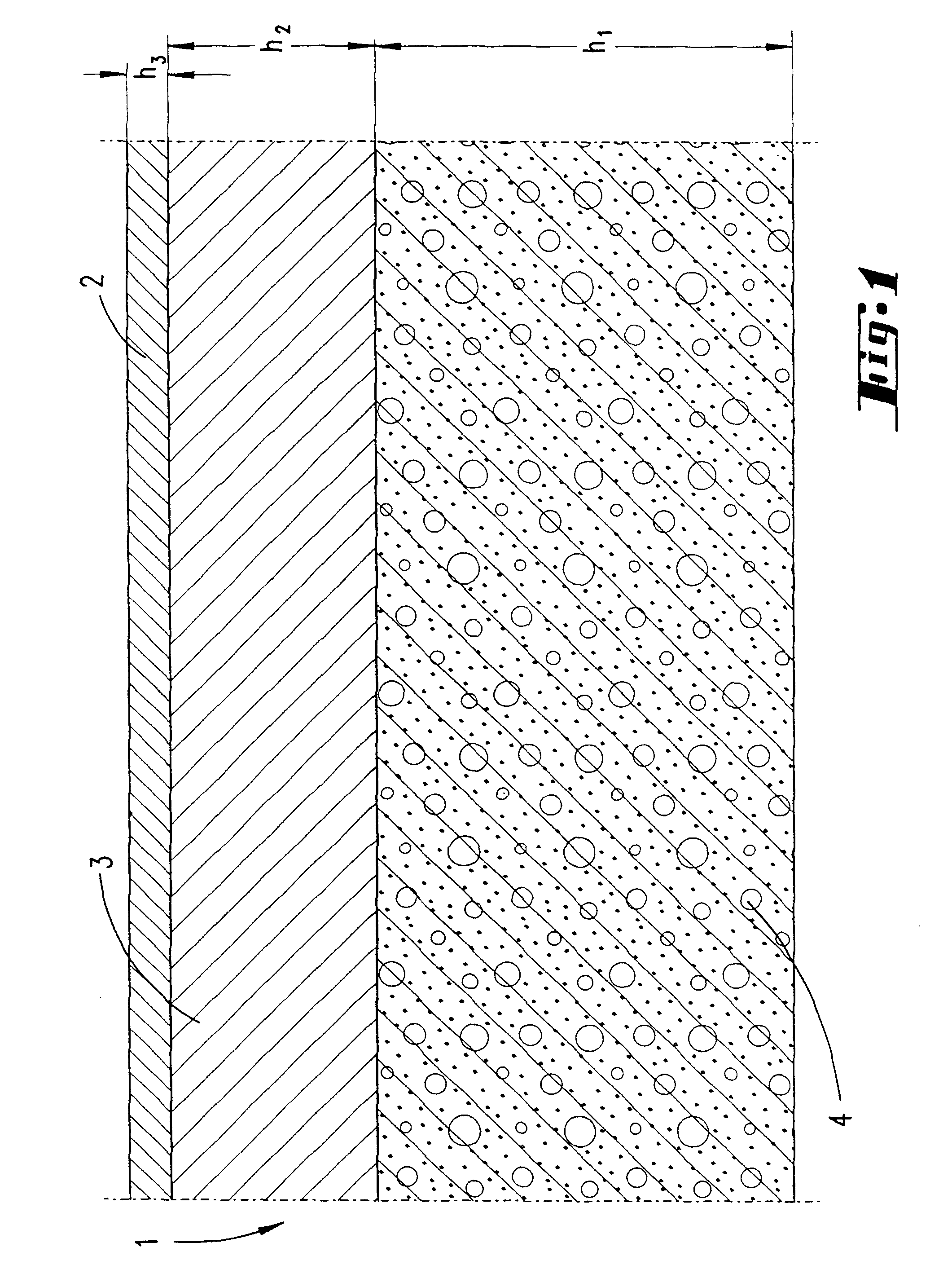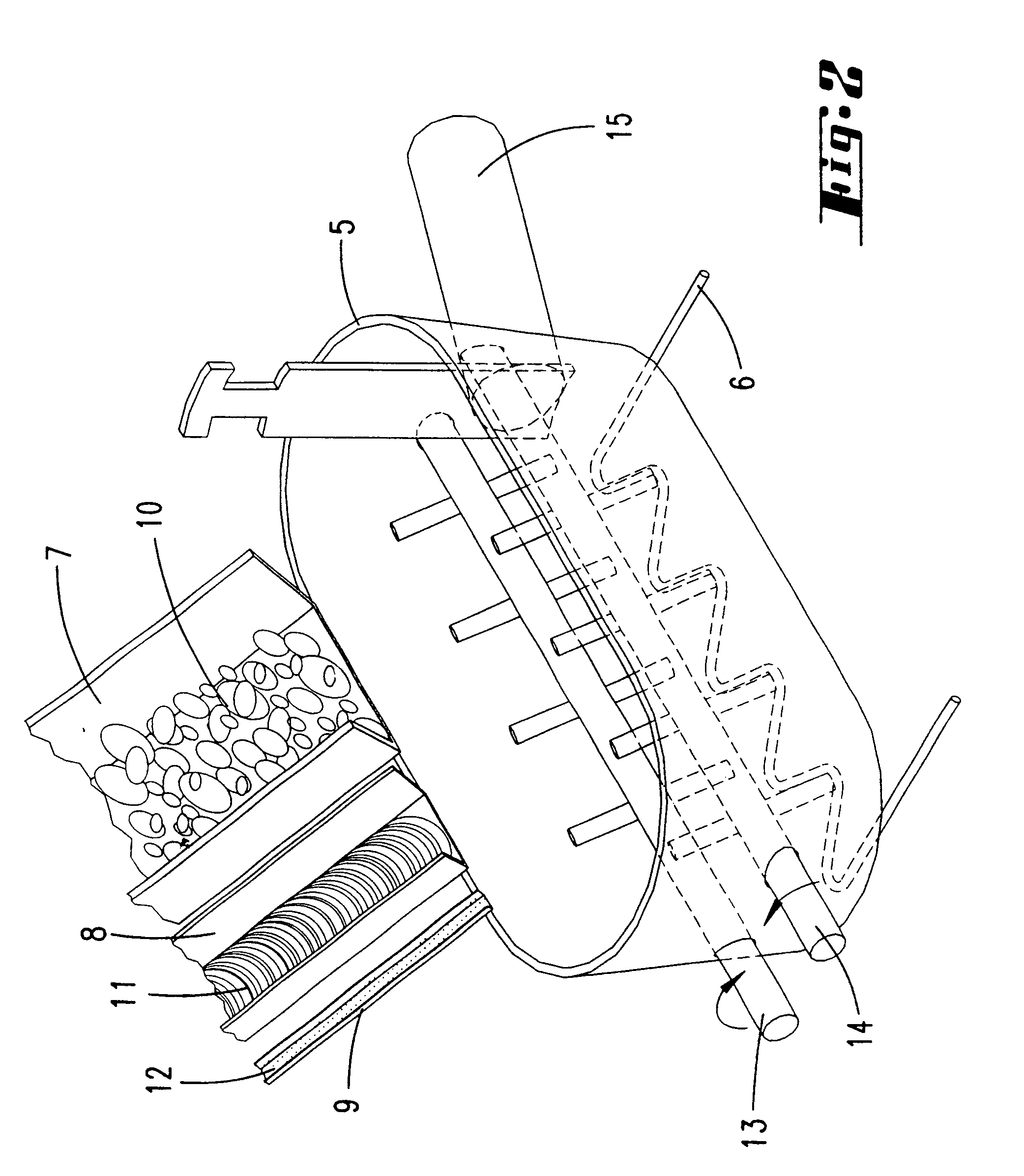Bitumen or asphalt for producing a road topping, road topping and method for the production of bitumen or asphalt
- Summary
- Abstract
- Description
- Claims
- Application Information
AI Technical Summary
Benefits of technology
Problems solved by technology
Method used
Image
Examples
example 1
Road-building bitumen B 100 was prepared with 2.5%, 5% and 7.5% by volume of FT paraffins. The FT paraffins were stirred into the bitumen using a paddle stirrer at 160.degree. C. The following values were obtained here:
The following explanations apply to the table:
The softening point was determined using a ring and ball in accordance with Austrian Standard C9212. The penetration was determined in accordance with Austrian Standard C9214. The Fraass breaking point was determined in accordance with Austrian Standard C9213. The thermal stability (tube test) was tested in accordance with TL-Pmb, Part 1 (1991) at +180.degree. C. and 72 hours. The adhesive behavior was tested in accordance with Austrian Standard B3682 on the following stones:
EBK 8 / 11 dolomitic limestone (Bad Deutsch Altenburg); EBK 8 / 11 dolomite (Gaaden); EBK 8 / 11 granulite (Meiding); EBK 8 / 11 granite (Niederschrems).
The "rolling thin film oven test" heating test was carried out in accordance with ASTM D 2872-88 at 163.deg...
example 2
A road surface consisting of a pavement layer and an asphalt binder layer was produced. The asphalt layer contained 2-3%--based on the bitumen--of FT paraffins of usual chain length as obtained from the Fischer-Tropsch synthesis.
A significant extension of the possible compaction time of the bituminous sub-base from the 0.5 hour usual hitherto to more than 2 hours was evident owing to improved flow behavior due to the addition of FT paraffins. Processing was still possible at outside temperatures of below 3.degree. C. The degree of compaction in the bituminous sub-base and in the pavement layer also increased. For example, degrees of compaction of 97% were usual hitherto. Here, a degree of compaction of more than 100% was achieved. A significant increase in durability with a considerable reduction in the tendency to form wheel tracks was obtained.
example 3
Mastic asphalt was prepared with a bitumen content of 7.5. FT paraffins were added to the bitumen in a proportion of 5%, based on the weight of the bitumen. A reduction in the hitherto usual processing temperature (stirring temperature) from 250 to 220.degree. C. was obtained. In spite of the reduced processing temperature, the addition of FT paraffins resulted in an improvement in the flow behavior, which resulted in a longer processing life for the mastic asphalt. A significant reduction in the emission values on application of the mastic asphalt was observed owing to the temperature reduction. Overall, more square metres were achieved per time unit during processing since it was possible to process greater amounts of asphalt without having to fear a reduction below the minimum processing temperature necessary.
PUM
| Property | Measurement | Unit |
|---|---|---|
| Fraction | aaaaa | aaaaa |
| Fraction | aaaaa | aaaaa |
| Fraction | aaaaa | aaaaa |
Abstract
Description
Claims
Application Information
 Login to View More
Login to View More - R&D
- Intellectual Property
- Life Sciences
- Materials
- Tech Scout
- Unparalleled Data Quality
- Higher Quality Content
- 60% Fewer Hallucinations
Browse by: Latest US Patents, China's latest patents, Technical Efficacy Thesaurus, Application Domain, Technology Topic, Popular Technical Reports.
© 2025 PatSnap. All rights reserved.Legal|Privacy policy|Modern Slavery Act Transparency Statement|Sitemap|About US| Contact US: help@patsnap.com



